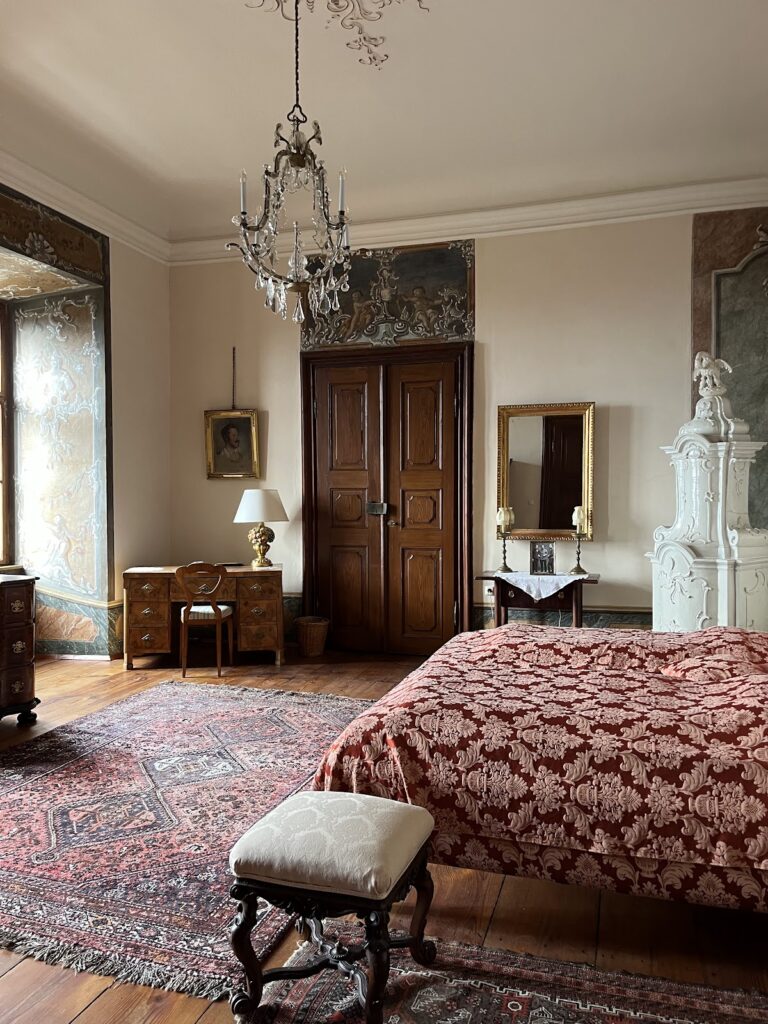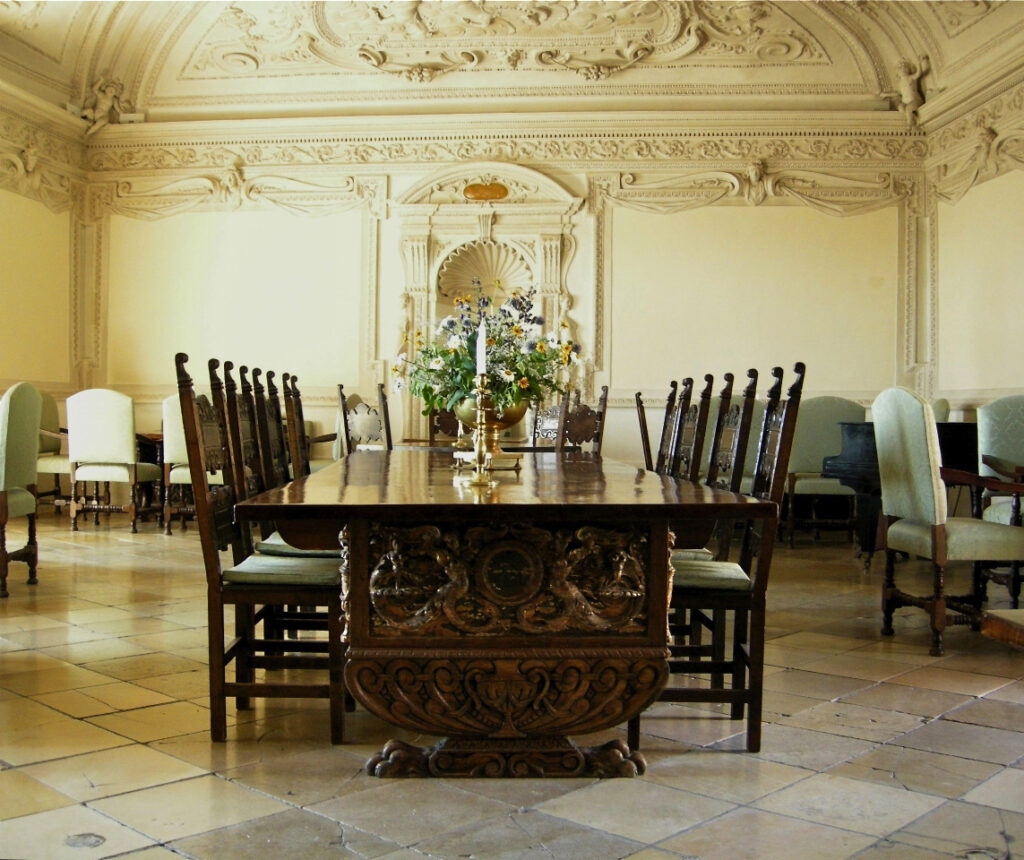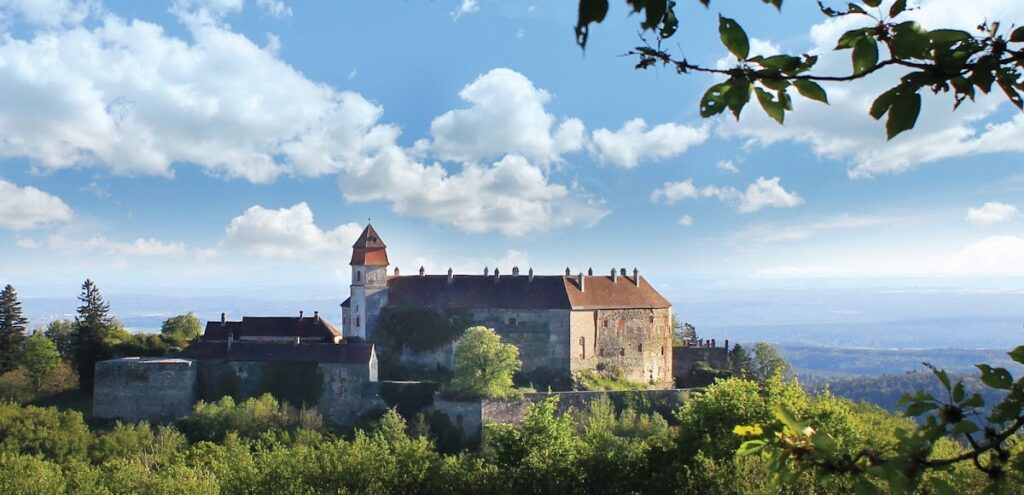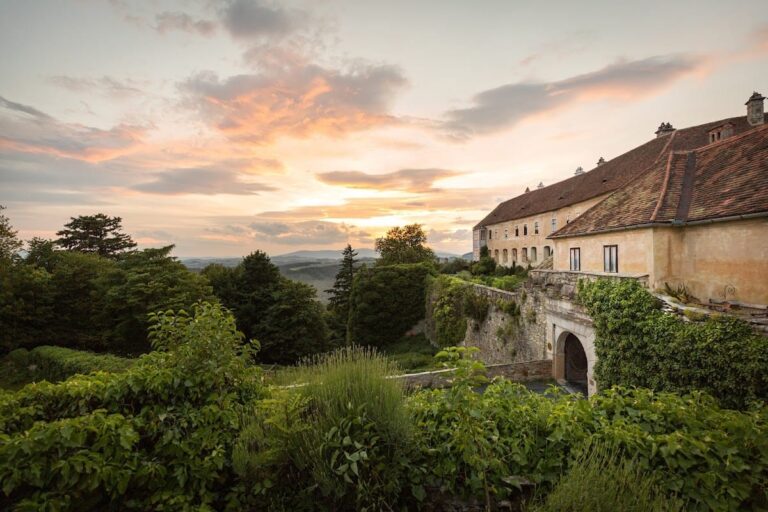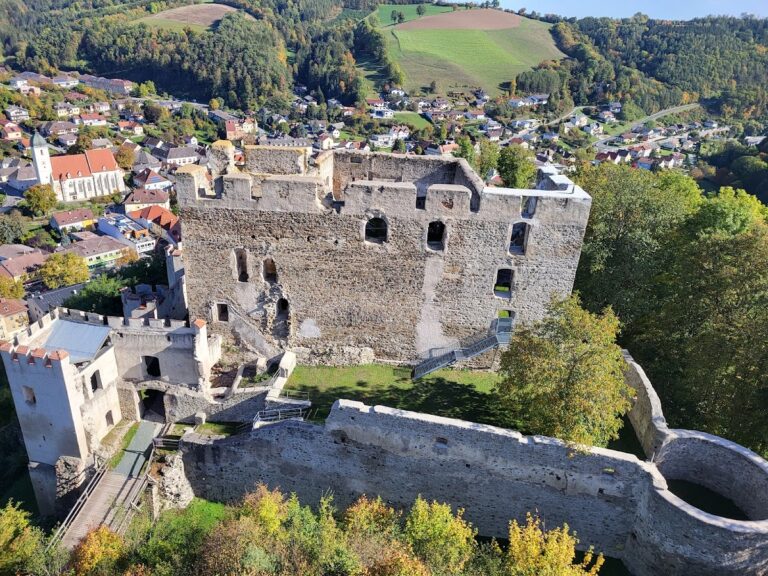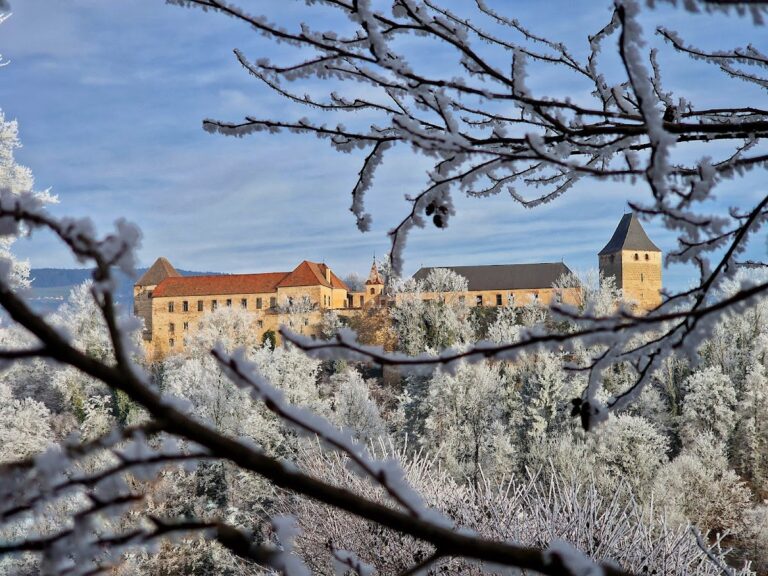Bernstein Castle: A Historic Fortress in Austria
Visitor Information
Google Rating: 4.4
Popularity: Low
Google Maps: View on Google Maps
Official Website: www.burgbernstein.at
Country: Austria
Civilization: Unclassified
Remains: Military
History
Bernstein Castle stands in the municipality of Bernstein, located in present-day Austria. The fortress originally belonged to the Kingdom of Hungary and is believed to have been built by medieval settlers between the 12th and 13th centuries. The site itself likely hosted an earlier fortification, as suggested by the nearby village of Grodnau, whose Slavic name means “the village belonging to the castle.”
The earliest historical records trace the region back to 860 AD when the Archbishopric of Salzburg controlled the land. Around this time, a man named Jacobus received land near the Pinka River, where he established the village of Rettembach, close to the castle hill rising 615 meters above sea level. By 1199, the castle fell under Hungarian sovereignty. During the 13th century, ownership shifted among prominent figures including King Emeric of Hungary, Duke Frederick II of Austria, who ruled from 1230 to 1246, King Béla IV of Hungary—who reconquered the castle in 1236—and Count Heinrich II of Güssing by 1260.
After a period of local aristocratic control, King Charles Robert of Hungary defeated the area’s lords in 1336 and incorporated Bernstein Castle into the Hungarian crown lands. Half a century later, in 1388, Queen Maria of Anjou granted the castle to the Kanizsai family, a noble lineage with influential ties. The late 15th century saw a brief return of the castle to Hungarian royal hands under King Matthias Corvinus around 1482. Shortly thereafter, Emperor Frederick III pledged the fortress to Hans von Königsberg in 1487, marking imperial involvement in its governance.
Bernstein Castle faced serious military challenges during the 16th century, notably two unsuccessful sieges by Ottoman forces in 1529 and 1532 under Sultan Suleiman the Magnificent. These attacks prompted significant fortification efforts, including the construction of a ring of bastions designed to provide protection for local settlers in times of conflict. Early in the 17th century, specifically in 1604, the castle withstood a prolonged siege by a coalition army of Turks, Hungarians, and Tatars led by the rebel leader István Bocskai, demonstrating its strategic resilience.
An accidental explosion of the powder magazine in 1617 resulted in substantial damage. Following this event, Ludwig Königsberg commissioned a reconstruction that transformed the castle’s Gothic interiors into Baroque style. This renovation also involved dismantling the original keep and towers to suit evolving architectural preferences. In 1644, ownership passed to Count Ádám Batthyány, and centuries later in 1864, Gustav Batthyány transferred the estate to his steward Edward O’Egan, who quickly sold it to Eduard von Almásy. The Almásy family has maintained possession of Bernstein Castle ever since.
The castle is also tied to the local legend of the “White Lady,” a ghost reportedly appearing since 1859. The spirit is said to be the restless presence of Giovanna de’ Frescobaldi, wife of Lorentz von Ujlak, whose tragic love story unfolds during the reign of Matthias Corvinus. This tale contributes to the castle’s rich cultural heritage and enduring mystique.
Remains
Bernstein Castle is perched atop a 615-meter hill, overlooking the Tauchental valley, making it the highest fortress in the Burgenland region. Its layout features a defensive complex centered around an inner gate and an outer courtyard, elements characteristic of medieval castle design that have survived various phases of adaptation and reconstruction.
A significant transformation took place after the failed Ottoman sieges in the early 16th century. An Italian architect named Francesco de Pozzo was commissioned to design a ring of bastions surrounding the castle. These earthwork and stone fortifications were built to enhance its defenses and provide refuge to local villagers in times of attack, reflecting the military innovations of the era adapted to withstand artillery and prolonged sieges.
The catastrophic explosion in 1617 damaged much of the Gothic interior, leading to a Baroque makeover. This renovation involved removing original elements such as the keep and towers, replacing them with stylistic features befitting early 17th-century tastes. Inside the castle, a prominent knights’ hall dates from this period, notable for its richly decorated stucco ceiling, which exemplifies Baroque artistry within a formerly medieval stronghold.
Bernstein Castle also preserves a 16th-century alchemists’ kitchen, an unusual feature that hints at the presence of early scientific or mystical experimentation on site. Closely connected is its torture chamber, now part of a museum exhibit, which offers insights into the methods of justice and detention practiced in the castle’s history.
Today, the castle complex includes well-defined spaces such as the outer courtyard, which once served as a gathering and staging area, and an inner gate that controlled access to the inner precincts. Many parts have been restored or maintained by its private owners, with documentation and photographic records available through official channels.
Surrounding Bernstein Castle are the settlements of Bernstein and Rettenbach, both established as castle villages to support the fortress and its inhabitants. The castle’s scenic and historical qualities have also drawn filmmakers, including the use of its grounds in the 1978 film “Das Lustschloß im Spessart,” highlighting its enduring presence in cultural memory.

